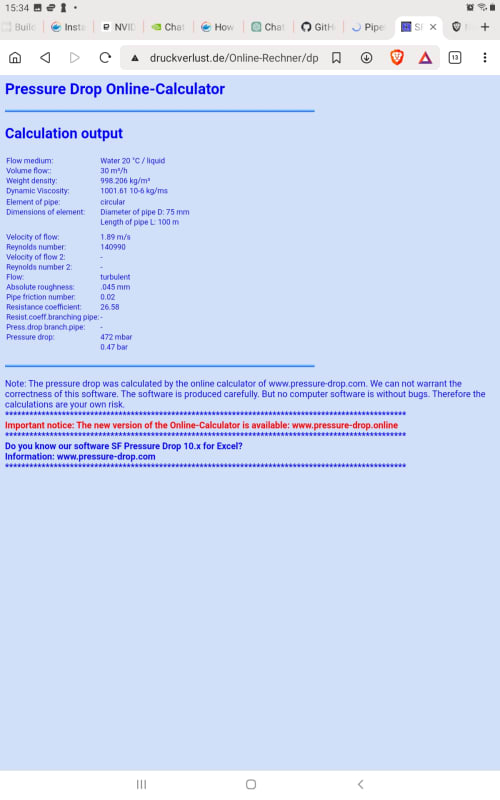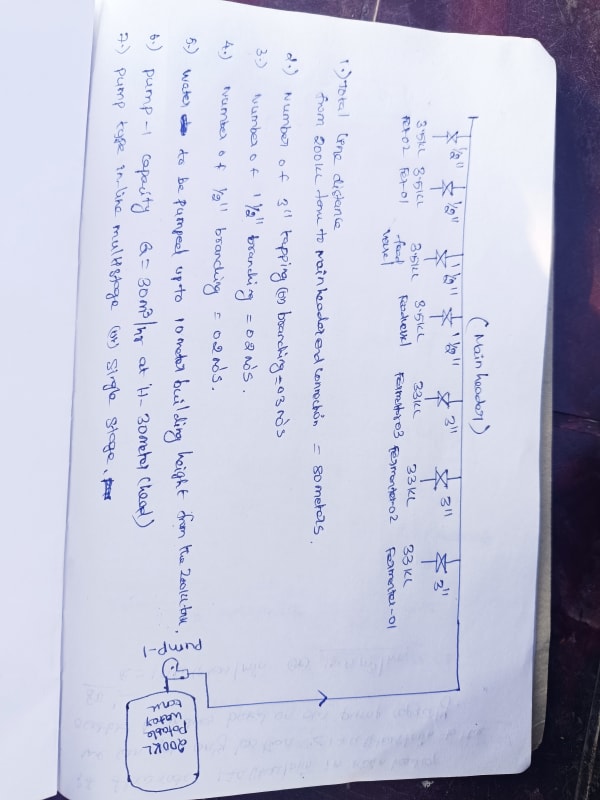Asisraja D
Mechanical
- Jan 3, 2024
- 160
Hello professionals
Thank you for your comments. We plan to route potable water to our block where we installed 33kl fermenters and we select pump capacity for 30 m3/hr with 30mtr pump head. The problem is I don't know how much header size would be efficient to fill up the fermenters fast. I have attached my hand sketch for clarity. All of your time is precious so when you have time consider my post again thank you all.
Thank you for your comments. We plan to route potable water to our block where we installed 33kl fermenters and we select pump capacity for 30 m3/hr with 30mtr pump head. The problem is I don't know how much header size would be efficient to fill up the fermenters fast. I have attached my hand sketch for clarity. All of your time is precious so when you have time consider my post again thank you all.



![[2thumbsup] [2thumbsup] [2thumbsup]](/data/assets/smilies/2thumbsup.gif)

